
Hey there, amazing parents! Are you ready to embark on an exciting taste adventure with your little one? Introducing new flavors can feel like navigating uncharted territory, but don’t worry – we’ve got you covered! Let’s explore this Baby’s First-Year Food Guide.
Thank you for reading this post, don't forget to subscribe!The First Steps: Starting Simple
The Three-Day Rule
Building Your Flavor Foundation
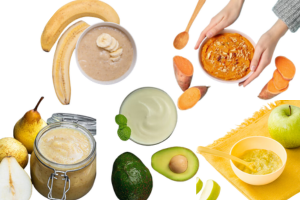
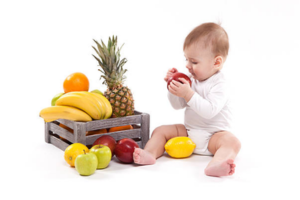

When you begin introducing solid foods, keeping things simple is key. Your baby’s taste buds are brand new to flavors beyond milk. Start with single-ingredient purees to help your baby understand individual tastes.
Single-Ingredient Success Stories:
– Mashed banana: Nature’s perfect first food
– Sweet potato puree: Smooth and naturally sweet
– Avocado: Creamy and nutrient-rich
– Pear puree: Gentle on tiny tummies
– Apple sauce: A classic favorite
Before you get creative with delicious baby recipes, remember the three-day rule. Introduce one new food at a time and wait three days before trying another. This helps you identify any potential food sensitivities or allergies.
Signs to watch for:
– Rashes or skin changes
– Changes in bowel movements
– Fussiness or irritability
– Sleep pattern changes
– Breathing difficulties (seek immediate medical attention)
Think of introducing flavors like building a house – you need a strong foundation. Start with mild flavors and gradually work your way up to more complex tastes. Your baby’s palate will develop naturally over time.
Mild to Bold Progression:
1. Week 1-2: Single vegetable purees
2. Week 3-4: Single fruit purees
3. Week 5-6: Simple combinations
4. Week 7-8: Adding mild herbs
5. Week 9+: More complex combinations
The Art of Combining Flavors
Adding Herbs and Spices
Texture Transitions
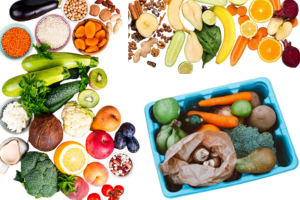

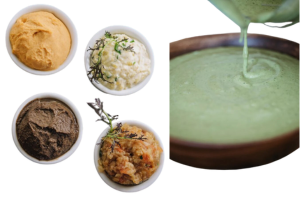
Once your baby is comfortable with single ingredients, you can start creating exciting combinations. Mix familiar favorites with new tastes to make delicious baby recipes more appealing. Remember to keep portions small and textures appropriate.
Winning Combinations:
– Apple and sweet potato
– Banana and avocado
– Pear and squash
– Carrot and apple
– Sweet potato and pea
Don’t be afraid to introduce mild herbs and spices! They can transform simple purees into exciting taste experiences. Just remember to add tiny amounts at first and avoid salt or sugar.
Baby-Friendly Seasonings:
– Cinnamon with apple puree
– Basil with sweet potato
– Mint with pea puree
– Mild curry with carrot
– Ginger with squash
As your baby grows, gradually introduce different textures. Start with smooth purees and progress to more textured foods. This helps develop chewing skills and prevents feeding difficulties later.
Texture Progression:
1. Smooth purees
2. Thick purees
3. Mashed with soft lumps
4. Soft chunks
5. Finger foods
Making Mealtimes Fun
Dealing with Food Rejection



Every baby is different, and yours will let you know what they like and don’t like. Watch for these signals:
Positive Signs:
– Opens mouth for more
– Leans forward
– Smiles during feeding
– Makes happy sounds
Signs of Dislike:
– Turns head away
– Pushes spoon away
– Makes faces
– Becomes fussy
Creating a positive eating environment helps your baby associate food with enjoyment. Here are some ways to make mealtimes fun:
Enjoyable Feeding Tips:
– Use colorful bowls and spoons
– Make airplane noises
– Smile and show enthusiasm
– Talk about the food
– Be patient and relaxed
Don’t worry if your baby refuses certain foods – it’s completely normal! Here’s how to handle food rejection gracefully:
Rejection Strategies:
– Try again another day
– Mix with familiar favorites
– Change the texture
– Stay positive
– Keep offering variety
The Power of Persistence
Creating a Routine
Seasonal Flavor Adventures

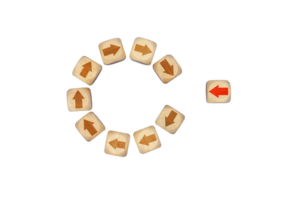

Did you know it can take up to 15 tries before a baby accepts a new food? Don’t give up after the first few attempts. Keep offering various flavors in different ways.
Persistence Tips:
– Offer small amounts
– Try different temperatures
– Change presentation
– Mix with favorites
– Stay patient
Establishing a feeding routine helps your baby know what to expect. This makes trying new foods less stressful for everyone involved.
Routine Elements:
– Regular meal times
– Consistent feeding location
– Proper seating position
– Family mealtimes when possible
– Clean-up ritual
Take advantage of seasonal produce to introduce new flavors. Fresh, seasonal foods often taste better and have more nutrients.
Seasonal Suggestions:
Spring: Peas, Asparagus, Strawberries…
Summer: Peaches, Zucchini, Green beans…
Fall: Pumpkin, Sweet potato, Apple…
Winter: Butternut squash, Pear, Carrot…
Making Your Own Baby Food
Food Safety First
Celebrating Success



Creating your own delicious baby recipes allows you to control ingredients and experiment with flavors. Plus, it’s more economical and environmentally friendly!
Basic Equipment Needed:
– Steamer or pot
– Blender or food processor
– Ice cube trays
– Storage containers
– Labels
When introducing new flavors, food safety is crucial. Follow these guidelines to keep your baby’s food safe:
Safety Tips:
– Wash hands thoroughly
– Clean all equipment
– Store properly
– Check temperatures
– Watch expiration dates
Remember to celebrate small victories along the way! Each new food your baby accepts is a win worth celebrating.
Milestone Moments, the first “…”:
– Solid food
– Combined flavor
– Textured food
– Finger food
– Family meal
Looking Ahead
Trust Your Instincts


As your baby grows, continue to introduce new flavors and textures. This builds a foundation for healthy eating habits that will last a lifetime.
Future Food Goals:
– Joining family meals
– Self-feeding skills
– Trying new cuisines
– Developing food preferences
– Building healthy habits
You know your baby best. Trust your parental instincts while introducing new flavors, and don’t hesitate to adjust your approach based on your baby’s responses.
Remember:
– Every baby is different
– Progress at your own pace
– Stay positive and patient
– Keep trying new things
– Enjoy the journey
FAQs
When should I start introducing solid foods to my baby?
What are the best first foods for babies?
Should I introduce single-ingredient foods or mixed foods first?
How should I prepare food for my baby?
When can I introduce finger foods to my baby?
Can I give my baby water or juice during the first year?
How do I handle food allergies during the first year?
How much should my baby eat during their first year?
When can my baby start eating solid food at meal times with the family?
How can I encourage my baby to try new foods?
Conclusion
The joy of introducing new flavors to your baby is a special part of parenthood. Take your time, stay patient, and remember that each small step forward is progress. Creating delicious baby recipes and watching your little one discover new tastes is a wonderful adventure you’ll both enjoy.
Keep exploring, keep using this Baby’s First-Year Food Guide, keep trying, and most importantly, keep having fun with food. Your baby’s relationship with food starts here, and you’re doing a great job guiding them through this exciting journey of flavor discovery!
